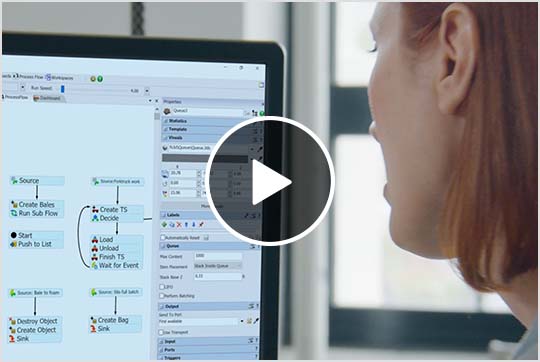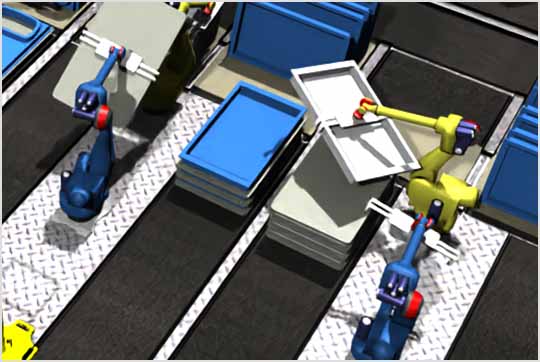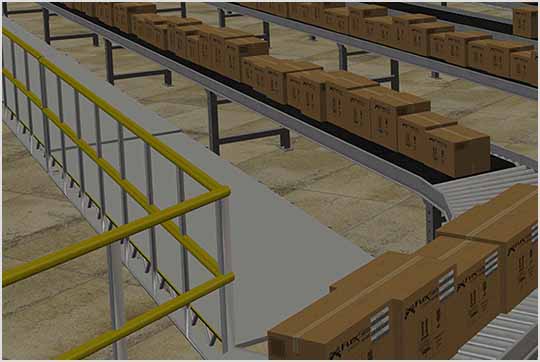& Construction

Integrated BIM tools, including Revit, AutoCAD, and Civil 3D
& Manufacturing

Professional CAD/CAM tools built on Inventor and AutoCAD
Autodesk FlexSim is easy-to-use 3D discrete event simulation software with high-end capabilities.
Drag-and-drop workflows to easily model production and people movement processes.
Built-in scenario manager to run experiments, make accurate predictions, and optimize.
Pre-packaged with modules to add conveyor systems, automated guided vehicles (AGVs), warehousing systems, supply chain, healthcare, and more.
FlexSim overview (video: 1:30 min.)
An automatic storage system, rendered in FlexSim’s RTX mode
A door painting system with automated material handling
An automotive assembly line, viewed through a VR headset
A warehouse model featuring conveyors and racks
A dashboard with a variety of built-in charts and graphs
Use a data-driven, evidence-based method to predict how changes will impact production.
Test what-if scenarios in a digital model without disrupting real-world operations.
Achieve realistic 3D visuals and process steps to share the factory story with stakeholders.
E-Learning
Explore the free, on-demand FlexSim courses and learning resources on the Autodesk Learning platform.
DOCUMENTATION
View the full documentation and reference for FlexSim, including tutorials, release notes, and more.
Q&A
Visit the community-led knowledge base and support forum, with a large catalog of simulation knowledge.
Autodesk FlexSim is used to model production, logistics, and people movement processes. Then, that model is used to visualize, analyze, and optimize the system. FlexSim users could be designing a new factory layout, responding to a bottleneck on the production floor, or validating a reconfiguration plan to predict its impact on future operations.
FlexSim users are typically focused on process improvement and often work in an industrial engineering or manufacturing engineering role. Anyone who wants to better understand or improve production, logistics, and people movement processes can benefit from FlexSim. These users include project managers, analysts, quality assurance, operations, health systems engineers, Lean/Six Sigma Black Belts, and more.
FlexSim enables 2D and 3D CAD workflows to model, visualize, and improve your production processes. This allows you to simulate a variety of scenarios and use the results to refine and optimize your factory design for increased manufacturing throughput.
At its core, a digital twin is a virtual representation of a physical process. The core competency of FlexSim is creating 3D models that represent the look and behavior of your existing system, and these models simulate how the actual system would respond using different inputs and layouts. For advanced digital twin solutions, FlexSim can pull in data at regular (or even real-time) intervals and run simulations.





